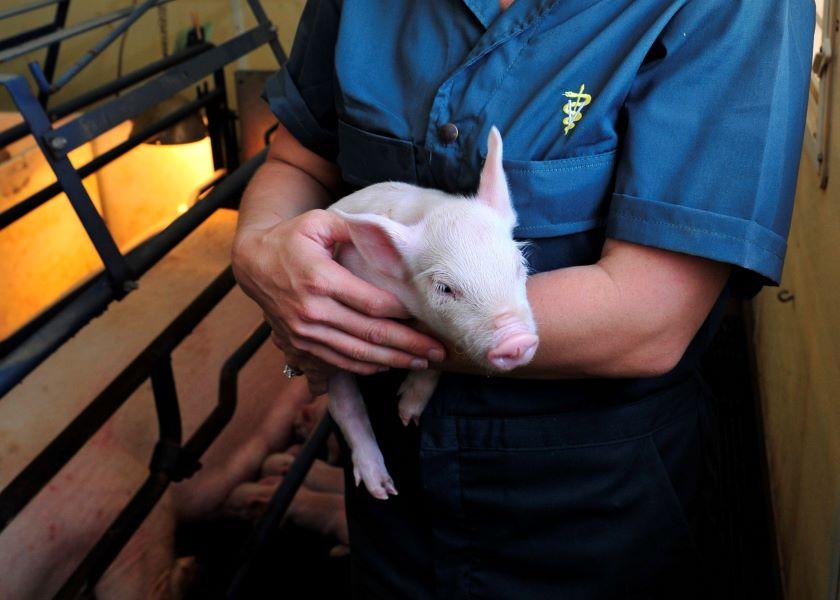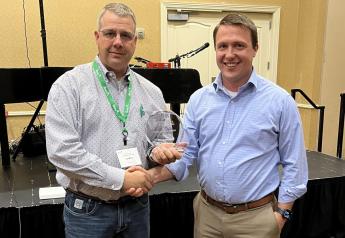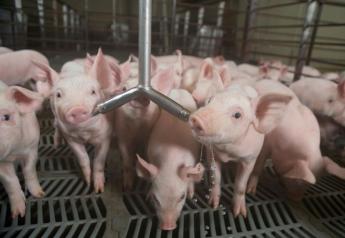People Play a Key Role in Influenza Control

Farm workers can play a significant role in the transmission of influenza A virus (IAV) within sow farms, according to Gustavo Lopez, DVM, a PhD candidate at the University of Minnesota, under the advisorship of Montse Torremorell.
“IAV is highly contagious, and given the high infection rates of IAV in pigs prior to weaning, contamination of farm workers ⸺ in particular their hands and the fomites handled by workers ⸺ appears to be common,” he said in a recent research paper.1
Lopez and other researchers at the University of Minnesota have been at the forefront of investigating IAV transmission on pig farms and factors that affect transmission.
Traditionally, pigs have been considered a source of zoonotic infections to people, and endemic strains of swine IAV can transmit to farm workers, their families and others, Lopez said, though infections like this are uncommon.
“However, a much less recognized event is ‘reverse zoonosis,’ which is the transmission of IAV strains from humans to pigs,” he explained. “IAV-infected people (when acting as biological vectors) can infect pigs and introduce novel IAV strains into pig farms. This is considered one of the key drivers of IAV diversity in swine.”
IAV detection in employees
In one study, farm workers were sampled during the peak of the 2018 to 2019 and 2019 to 2020 influenza seasons for 8 weeks, twice a week, before entering the pig facility and after the workday was over.
Sixteen of the 66 participants in the study (24.4%) tested IAV-positive at least once at the beginning of the workday, Lopez said. From the 919 samples tested, 20 (2.17%) were positive with some of the samples having cycle threshold values as low as 32.
“These results support the general understanding that farm workers can potentially introduce IAV into farms, although this may not be a frequent event and further characterization of the strains is necessary,” he said.
Farm workers as mechanical carriers of IAV
In a different study, researchers collected samples to assess whether changes in farm-management practices during the pre-weaning period could impact a piglet’s IAV prevalence at weaning.
Farm practices that were modified for the purpose of the study included changing gloves when handling study litters and no addition of piglets or nurse sows to study litters after the first day of life. There were 360 litters from 28 different farrowing rooms selected for the study from three sow farms.
“This research showed an overall decrease in IAV prevalence on the treatment group (29%) compared to the control group (43%),” Lopez said. “However, this difference was statistically significant only at two of the sampling points.”
Samples were also collected from materials used in the farrowing rooms and from workers’ hands after piglet handling, he said. Researchers found a high prevalence of IAV both on the hands and in the materials and tools used.
Good management is important
Lopez and the team of researchers agree that IAV is very contagious and spreads easily.
“In a pig farm with farrowing rooms next to each other and where there isn’t strict biosecurity between rooms, spread is likely to happen,” he said. “Farm workers can also be mechanical carriers of IAV, and certain management practices facilitate the maintenance and dissemination of IAV within farrowing rooms.
“Besides movement of pigs, contaminated fomites and hands of personnel may be a main driver in influenza spread within farrowing rooms,” he added. “Consider sanitary and management practices directed at lowering the amount and source of IAV in farrowing rooms (i.e., sow vaccination, washing carts between rooms, cleaning of processing and vaccination tools, changing gloves, washing hands, [and so on].
“These protocols delay influenza infections and can serve as deterrents to influenza spread,” Lopez added. “They will help producers reach the goal of weaning influenza-negative pigs.”
More from Farm Journal's PORK;
Influenza A Vaccination: Study Explores Transmission on the Farm
Defining Influenza – A Work in Progress
Piecing the Puzzle Together: Diagnostic Monitoring and Flu Prevention
Veterinarians Answer Questions on Influenza
Farm Factors Influencing Influenza A Virus Infection In Weaner Pigs







